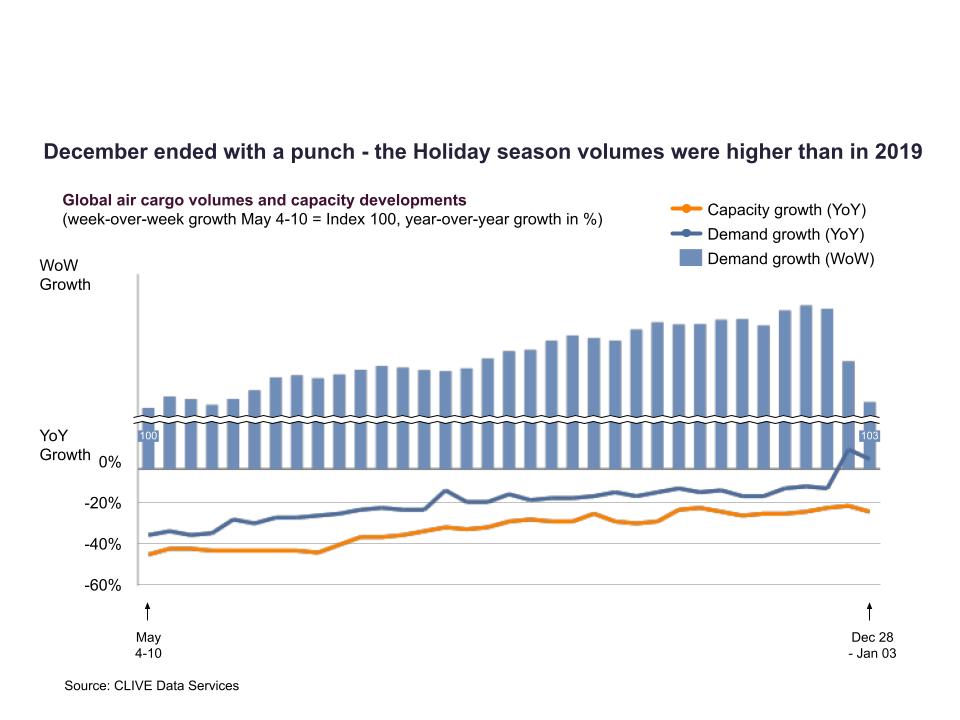
(Photo by Yu Kato on Unsplash)

Despite a not so traditional peak season for air cargo in the last quarter of 2020, the year ended on a ‘relative high’ in December with the first positive year-on-year growth in weekly volume in over 12 months, according to the latest statistics from CLIVE Data Services and TAC Index.
“For an industry looking for every glimmer of positivity, December’s data provided some modest growth indicators,” said Niall van de Wouw, managing director of CLIVE Data Services.
“December’s performance was surprisingly strong compared to the flattish level recorded in November, and in the second half of the month, volumes didn’t fall as much as we’d typically anticipate for this normally quieter time of year,” he added.
Volumes from the week of 21 December to 3 January rose 8 percent compared to the corresponding 2-week the year prior, contributing to two new records for the ‘dynamic loadfactor’ analyses.
First was a new high of 73 percent loadfactor in mid-December, whilst the week ending 3 January 2021 saw an unprecedented level for this time of year at 65 percent, 13 percentage points above the corresponding week a year ago.
Also read: Air cargo demand stalls in November
Volume in December continued to close the gap, down 5 percent compared to last year, and on a monthly basis it inched up 2.5 percent over November. The result was an overall dynamic loadfactor of 71 percent for the last four weeks of December.

Despite 2 percent increase in available capacity in December compared to November, the level of freighter and bellyhold cargo space on offer was 21 percent down year on year.
Whilst increasing airline revenues at a time of decreasing volumes may seem like a contradiction to outside observers, van de Wouw explained this is logical considering the rise in the dynamic loadfactor, where demand and supply come together.
“It clearly demonstrates the reason why airfreight rates have gone up and re-emphasises the value of weekly data. It allows companies to gain a better and quicker understanding of the way the market is trending and where it is rate-wise,” he noted.
Freight rates held up in December and, in some cases, increased over November even after the hoped-for peak volume failed to materialise and despite no immediate impact from vaccine shipments, noted Robert Frei, business development director at TAC Index.
Rates for shipments bound west from Asia to Europe or US, and Europe to the US, were significantly higher compared to eastbound rates, with prices from Shanghai (PVG) to Europe more than quadruple compared to shipments from Frankfurt (FRA) to China.
“Pricing from Asia to the US is still the highest, followed by Asia to Europe and, lastly, the transatlantic, with the highest prices reached in week 51,” he added.









